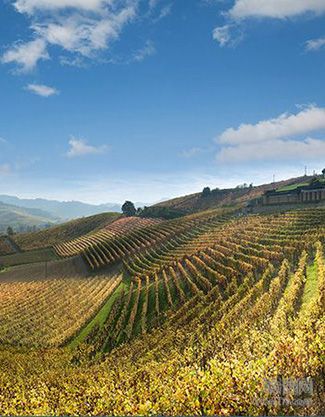Region: Toscana
History: Established as a DOC in 1983; Bolgheri Sassicaia split off as a separate DOC in 2013
Vineyard Area: 1,050 ha / 2,594 acres (2012, C)
Production: Approx. 34,000 hl (total 2012); avg. 375,000 cases bottled annually
Principal White Grape Varieties: Sauvignon Blanc, Vermentino
Principal Red Grape Varieties: Cabernet Franc, Cabernet Sauvignon, Merlot, Sangiovese, Syrah
Styles and Wine Composition:
Significant Production Rules:
Last Disciplinare Modification: 12/19/2013
[From February 2014 newsletter] Bolgheri (BOHL-geh-ree) is a tiny town with an outsize reputation. The charming village, located about five miles (8 km) inland from the Tuscan coast, has fewer than 200 inhabitants and is officially only a frazione of the commune of Castagneto Carducci. Some of Italy’s most renowned vineyards lie just west of the town, however, making Bolgheri a mecca for wine lovers.
The modern history of Bolgheri began at the end of World War II when Marchese (marquis) Mario Incisa got the idea to plant Cabernet Sauvignon grapes on his estate, in an area otherwise known only for rustic Sangiovese and Trebbiano wines. Liking the results, he went on to plant his Sassicaia vineyard with Cabernet in the early 1960s. Teaming up with his brother-in-law Nicolò Antinori and winemaker Giacomo Tachis, Incisa improved his Sassicaia wines during the 1970s, and they gained international fame, putting Bolgheri on the map.
In 1983, Bolgheri was established as a DOC—for white and rosato wines only. The red wines of the area, including Sassicaia, were not recognized by the denomination’s disciplinare, and they continued to qualify for only Vino da Tavola status. The absurdity of Sassicaia being equated with the legions of mediocre table wines gave rise to the concept of the “Super-Tuscan” wine—a maverick wine of great breeding but living outside the Establishment.
Sassicaia’s reputation attracted other winemakers who were interested in exploring the possibilities Incisa had demonstrated and making great wines primarily with French grapes. The DOC rules were finally revised in 1994 to encompass Cabernet-based red wines, and Sassicaia was given special status as a subzone of the Bolgheri DOC. The latest changes in 2013 move that a step further by taking Sassicaia out of the Bolgheri DOC and establishing it as a DOC in its own right: the Bolgheri Sassicaia DOC.
The Bolgheri DOC allows the production of white, rosato, and red wines. The whites can be a blended Bianco or varietal Sauvignon Blanc or Vermentino. The rosato and red wines can contain up to 100 percent Cabernet Franc, Cabernet Sauvignon, or Merlot, alone or in combination, along with up to 50 percent Sangiovese and/or Syrah. The reds must be aged for about a year, and if they are aged for two years with at least a year in oak, they can be labeled Superiore.

